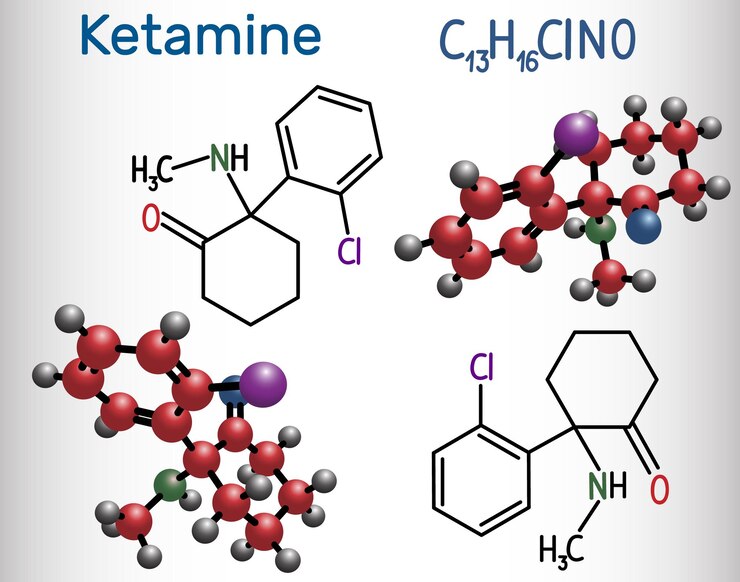What Is Depression?
Depression is a common and severe condition that can negatively affect an individual’s mental health, way of thinking, and actions. It is a treatable disease. When suffering from depression, you feel sad and losing interest in activities you used to enjoy. Depressed people can lead to all sorts of physical and emotional problems and can have a big impact on one’s ability to function.
Symptoms of Depression
Symptoms must continue for at least two weeks and reflect a difference in functioning from what was anticipated from you previously. Although numerous medical conditions could cause depression, it is equally as important to rule out medical causes. Some symptoms of depression are discussed below:
- The patient feels depressed or sad.
- Lost confidence or interests in previously preferred sports
- Having trouble sleeping or too long sleeping
- Lack of energy, exhaustion, or fatigue
- You are feeling guilty or lonely.
- Difficulty in thought, focusing, and making choices.
- Thoughts of dying or contemplating suicide
Depression impacts about six and a half percent of the adult population annually. Around one in six individuals would be affected by depression in their lifetime. Depression may impact someone at any point, but most generally begins in the early twenties. Women are almost entirely more inclined to experience depression than males. Various reports indicate that between 33% and 40% of women would suffer a major depressive disorder throughout their lives. There is a strong degree of heritability among first-degree relatives of having depression.

Why is ketamine exciting for treating depression?
Ketamine was first used to anesthetize troops battling on war lines and operating rooms. This drug is gaining popularity as a potential cure for severe depression, which is the most serious form of impairment in the world.
If a person reacts to ketamine, it may alleviate suicidality and alleviate other psychological conditions such as depression. Additionally, ketamine may be beneficial for managing depression and anxiety together.
Many other therapies for suicidal thoughts and depression may not offer immediate relief, and others need to explore multiple options to get relief. This is valid with all the class medications most successful for severe depression, which continue to react to other therapies.
How does ketamine work?
It is unclear exactly how ketamine functions. Since it works in an antidepressant manner by a particular route, ketamine can be an appropriate therapy for people who have not reacted to prior therapies.
Ketamine is believed to function primarily on the NMDA receptors in the brain. It is thought to bind to these receptors raising the volume of glutamate in this gap between neurons. Glutamate then stimulates the AMPA receptor and, in turn, excites interactions in another receptor. When NMDA receptors are blocked, they activate AMPA receptors, which leads to the release of different molecules that facilitate new communication pathways. Synaptogenesis, which influences mood, thinking habits, and memory, develops throughout puberty.
Ketamine is also likely to be involved in treating psychiatric depression. It can minimize the inflammation involved in mood disorders or promote communications inside the brain areas people need to connect. Ketamine has been seen to function in many areas concurrently, with many being tested.

Is Ketamine Safe for Everyone?
Many mental health specialists have given alerts regarding the risks of ketamine. “Although it is an effective treatment for treating acute symptoms of depression, we don’t yet understand the potential long-term negative effects from the use of antidepressants.” “Some studies have shown that it can be harmful to brain cells and cause bladder destruction, particularly at higher doses.”
Although it may help those who need prompt reform and may have historically struggled to benefit from traditional therapies. We will investigate studies on the long-term consequences, efficacy, and optimal doses of ketamine in the future.
What are the possible side effects of ketamine?
Every medication has side-effects. Ketamine given by intravenous infusion can cause:
- Hypertension
- Intestinal cramping
- Congestive heart failure
- Sensory aberration
Ketamine consumption may have possible side effects as well. We can do more clinical analysis of ketamine.
Types of ketamine Clinic therapy
There are two main types of ketamine clinic depression care, one depending on ketamine and the other relying on ketamine and an antidepressant. The first is administered via injection. Ketamine infusion is the most widely performed medication treatment and is the most effective. Much study has been carried out on the process of infusion of ketamine IV. A secondary approach is given by nasal spray.

Ketamine IV infusion
Racemic ketamine, which is supplied intravenously, goes straight to the bloodstream of the patient. This is also known as ketamine, intravenous, or IV. The drug comprises a combination of two mirror-image molecules named “R” and “S” ketamine. FDA permitted its use as an anesthetic decade earlier. Doctors use it out-of-label with those with treatment-resistant depression. Infusion medication with IV ketamine is not a first-line remedy for depression. Instead, it is given when drugs for antidepressants malfunction. Ketamine takes action automatically when delivered by an IV injection through the forearm, and the results will extend from days to weeks. Usually, patients undergo a sequence of six infusions as part of an ‘induction’ process for two or three weeks. The treatment cycle starts after that, and patients usually return every two to six weeks for one infusion. Ketamine has also been used by doctors to combat bipolar disorder, although it is not recommended for infants or people with mania, active depression, or severe heart disease.
Nasal spray
Esketamine is given in the form of a nasal spray. Instead of combining both R and S, it utilizes just the ‘S’ atom. The FDA approves this therapy method with ketamine; however, there is much less evidence on its clinical manifestations of depression. The two types of ketamine communicate with brain receptors differently. The distribution mode (IV vs. nasal spray) often influences the medication’s potency and side effects. To compare the effectiveness of ketamine, far further study is needed.
Conclusion
In MDD and BD, ketamine can provide a fast, robust, however temporary antidepressant influence. With its sudden impact on suicidal ideation, it seems especially interesting in people experiencing thoughts of suicide. Up to 1-2 weeks after infusion, the effects of ketamine are temporary, and the long-term impact is less reported. Acute adverse effects correlated with single-dose usage of depression are frequent but normally temporary and spontaneously overcome. However, it is important to examine immediate and long-term effectiveness and protection concerns and routinely analyze harmful effects. More experiments are required to investigate the best dosage and administration method to maximize the ketamine antidepressant effect and explain its mechanism of action.


